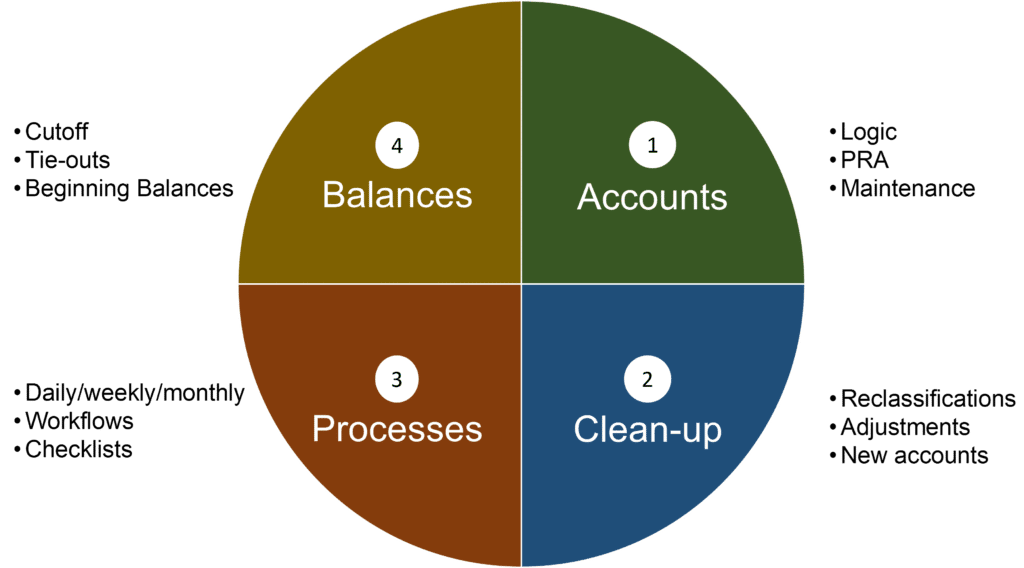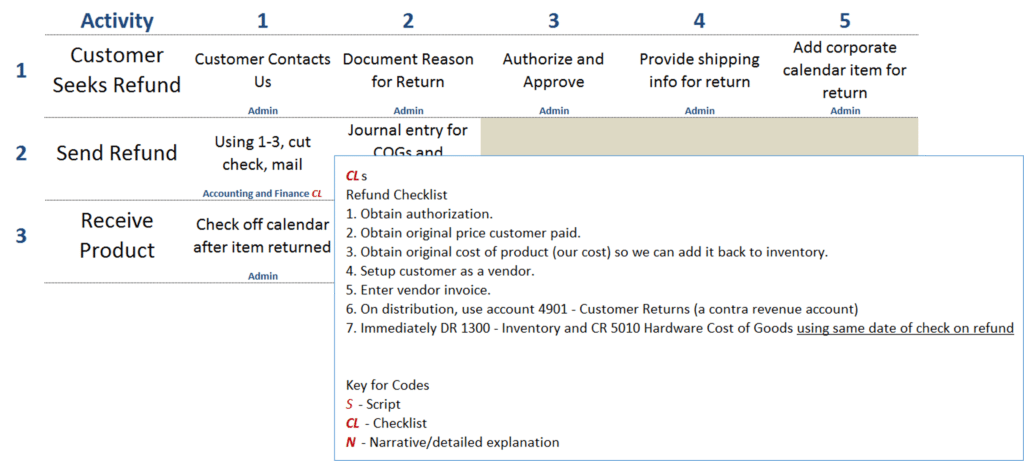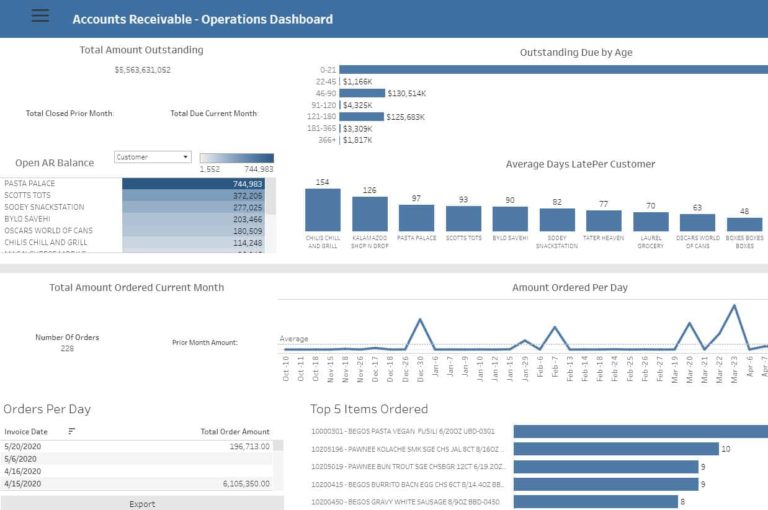I used to be an accounting snob. But let’s go back in time before that attitude began to surface.
When I started my practice some twenty years ago, I stepped away from an environment where accounting was a non-issue. I served (my prison) time at KPMG and then the firm that was formerly known as McGladrey & Pullen. By some act of God, I survived those years. During those years in public accounting, I never saw bad accounting systems and processes. After several engagements, I thought that was the norm.
I then acquired what seemed like two or three MBAs while working for a mid-sized business where we had footprints in major automotive, retail, real estate, and a hodgepodge of other holdings. Similarly, accounting was a non-issue—great systems, great processes, great technology, and great people (ahem, that included yours truly).
And then a funny thing happened. Well, I suppose what I experienced with my first dozen or so clients while peeking at their financials was no laughing matter. The accounting was horrendous. I mean painfully terrible, and I don’t possess the right vocabulary to express the accounting messes I kept running into.
That’s when my accounting snobbery attitude kicked in. I thought QuickBooks was a joke. Peachtree wasn’t much better. Small accounting firms were not business thinkers and only focused on taxes. Compliance accountants only cared about a GAAP-based report that no one read nor understood.
I had a decision to make—keep being a snob, or start being a solution provider to these messes.
The Dirty Little Truth of Accounting and Bookkeeping Firms
At this point, you might be thinking the source of the bad accounting was the accountant on staff doing the work. In some cases, that’s true. The office manager in a small $3 million business is usually tasked with the bookkeeping until the owner hires their first accounting manager.
In many of the businesses I started working with, either the owner’s accounting firm was doing the daily accounting or a third-party bookkeeper.
That’s why I was so baffled at the accounting messes I encountered. Think about that for a minute—accounting firms doing the daily accounting where the accounting system is essentially a trainwreck. Ditto for third-party bookkeepers. How can that be?
The Driving Force Behind Bad Accounting
Most accountants that work in firms started those positions out of school. That means they have never worked for a corporate controller or a director of accounting where the underlying ERP is geared to solve simple to complex business problems.
Additionally, many accountants and bookkeepers who run the accounting for clients are focused on the year-end tax return. As long as the numbers tie out to the tax return, that’s all that matters.
Many third-party bookkeepers I’ve interviewed have never worked in mid-sized to large accounting departments where they learned great systems and processes and why accounts were set up the way they were (which augments internal reporting and FP&A).
When I meet with CEOs for the first time, we go through mock weekly and monthly financial statements along with a driver-based financial and business modeling file that mimics their firm. The responses nearly always include, “That is so clear to me.”
Why is that? Because their current accountants and bookkeepers do not understand the role of accounting to support their clients and the decisions they have to make each day.
What Is an Accounting Cleanup?
Before I share a simple framework, this work is not the main thing. Or, it shouldn’t be. Cleaning up someone’s accounting mess is a necessary evil. Behind every strong accounting system, there is a robust infrastructure that includes the accounts, streamlined and effective processes, maintenance schedules, and the subsequent reporting to data repositories and data lakes (and/or data warehouses).
I’ve lost count of how many cleanups I’ve worked on or quarterbacked. Many are in the ecommerce space. After about a dozen of these projects, I stepped back to ask myself, “What’s your process, Mark?”
“Well, Mark … it’s art and science. But since you like science, here’s a simple representation of the three- to four-week process.”

All Roads Lead to a Robust Chart of Accounts Structure
G3CFO is a finance-oriented firm. We’re not accounting-centric. So, I’m keeping this section brief. Plus, if you’re a CEO, I’m going to lose you if I go too deep.
Let’s use an analogy—social security numbers. Let’s pretend they don’t exist. How would that work? Think of an organization that relies on your unique tax identification number. Without that number, would you be able to collect social security at an advanced age? How would you be credited with the taxes you pay for income annually? Could you easily get a bank loan? Could your kids apply for financial aid?
Furthermore, in this same database where account numbers are no longer used, assume that the sub-accounts are used for families. Sons and daughters have accounts (again, no account numbers) and they are sub-accounts of their parents. What if there is a divorce? What if a parent passes away? What happens when a child leaves home and gets married? How do those sub-accounts get updated?
Whether we’re talking about a database of every person with a social security number, an SKU master for every product you sell, a list of all customers in your CRM, the hundreds of vendors in your legacy MRP system, or countless other lists in other systems, each of these databases share one thing in common. They are well-structured and carefully planned out. The same should hold true for the chart of accounts.
A clean, well-organized chart of accounts is not hard to develop. Just don’t let your CPA firm set them up. You want a seasoned controller who understands your industry to set them. The process is part art, part science. The art part is creating a structure that allows for growth in your business.
I could easily write 10,000 words on this subject, but I’ll share a quick video instead regarding this part of the cleanup.
The Cleanup Phase
Once the chart of accounts is revised, it’s on to the cleanup phase. Many of your existing accounts will have too many transactions in just one account. My favorite example is Marketing and Advertising, a typical and standard account in most QuickBooks setups. In ecommerce, this account will include charges for PPC, marketing firms, monthly software subscriptions (think HubSpot or Marketo as an example), offline ads, marketing swag, and numerous other expenses. The cleanup phase includes parsing out these costs to the right account that’s just been added to the chart of accounts.
For accounting managers only:
- focus on the current year only
- for prior years, only focus on material balances
- don’t be afraid to make adjustments as needed (this will probably be needed in your COGs and compensation accounts)
- don’t be surprised if you end up adding a handful of new accounts that we missed in the first phase
Creating Your Processes and Checklists
I’m long in the tooth when it comes to systems, processes, and checklists. It’s one of my natural instincts. Admittedly, I occasionally go too far with checklists and processes.
Here’s a good rule of thumb on documentation. Could a non-accountant perform any of your activities without guidance or a checklist? If not, document the process in a simple script, narrative, or checklist using text, visual, audio, video, or all of these techniques. My preference is checklists and video.
Below is a simple example of a checklist for some computer equipment being returned to a company that hosts an online POS system. The main idea in this screenshot is to keep it simple and test the process on another person. That is, could another person in the accounting department complete the process without the assistance of the person creating the process?

As mentioned earlier, documentation can be in any format that makes sense in your company. One of my clients has short videos on nearly every process they have. One of my PT clients documents all of their checklists on Google Sheets with a large table showing all processes.
For big, critical processes, give them a name, an owner, and the last revision date. Put a calendar reminder in your email system to review the process quarterly requiring you to determine if changes and enhancements are needed.
In short, don’t go through the motions. The greatest businesses in the world have great standards of excellence in everything they do on from the front stage to the back office.
Beginning Balances – The Final Stage
When I shepherd a cleanup process, my starting point is always the beginning of the fiscal or calendar year, even if we’re wrapping up the cleanup work in October or November.
During this phase, I ensure the prior year reconciles to the tax return and the audit report if one exists. Beginning balances will be needed for AR, inventory, AP, and numerous accrued liabilities accounts if the prior bookkeeper has been using the cash basis for reporting transactions.
I could easily spend about one hour on smart ways to ensure proper beginning balances and rolling those forward by month. That would take too long in this discussion. The key idea is that we’re not done until we nail down beginning balances for all of the balance sheet accounts.
Let’s say we start our accounting process the right way on September 1st after the first three phases above are completed. Using inventory as an example, we’d ensure the right inventory balance as of January 1st and each month-end through August 31st. That applies to every balance sheet account.
That may seem like a daunting task. It is not. We already have the data to create the proper month-end entries. Now it’s just a matter of recording them.
Why Cleanups Matters
I suppose if you want to remain small, be able to pay your bills and taxes on time and generate a nice living, keep doing what you’re doing, and keep your accounting system as it is.
If you want to scale, you need numbers that make sense. A clean accounting structure and process augments smart business reporting and the PRA process (planning, reporting, and analysis). Assuming you have a robust business model, bankers are more likely to trust your numbers when you need those million-dollar bumps in your line of credit.
Ready to sell the business? Do you think your potential buyers prefer the pre-cleanup numbers or the post-cleanup numbers? You know the answer.
Before wrapping up, let me give you the answer to your most pressing question. It’s for about 30 days. Even for a $50 million dollar ecommerce business, the cleanup work should take no longer than four weeks. That’s assuming we can dedicate one of your accounting staff members to the job nearly full time for that month.







